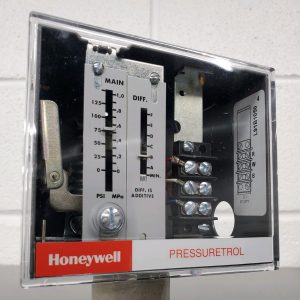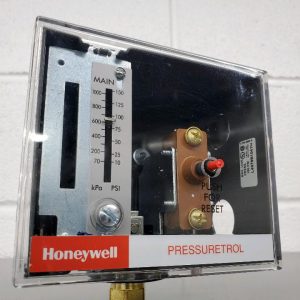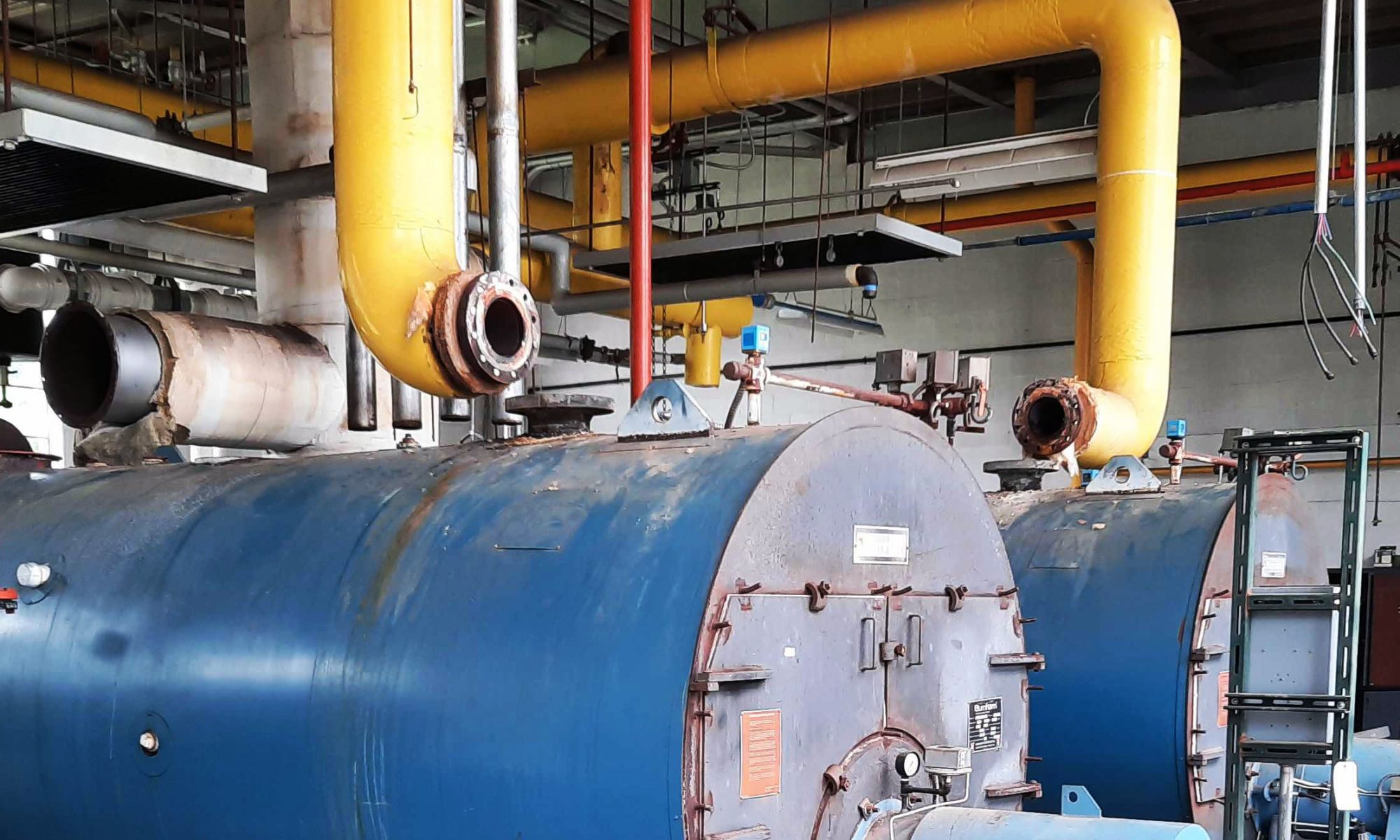Understanding Steam Pressure Controls: Three Basic Functions
Features
Most steam boilers have three main controls that maintain the correct steam pressure inside the boiler and cause the boiler to shut down if an unsafe pressure is reached. These three main controls are the operator, modulation, and high limit pressure controls.
Operator Pressure Control

This control is what shuts down the boiler at a specific setpoint. The boiler is firing and making steam pressure. The pressure is rising, and the boiler is in low fire due to low load. The operator control will shut down the boiler to prevent too much steam pressure from building up. However, the operator control is not the same as the boiler steam pressure setpoint. These are commonly confused. Your boiler steam setpoint (the steam pressure you desire to maintain) is lower than your operator pressure control.
You don’t want to set the operator at the steam pressure you want to maintain, as it will shut off the boiler too soon and the pressure will drop in the off cycle leading to low steam pressure issues. The operator control should be set about 5–10 PSI above the actual steam pressure you want to maintain in the boiler. This allows the boiler to reach low fire and if steam pressure keeps rising, it will shut down the boiler. The boiler will restart when the pressure drops below the differential set on the operator. For example, say you want to maintain 80 PSI. Set the operator to 88 PSI and set a 5 PSI differential so that the boiler will shut off at 88 PSI but will start the purge cycle when the pressure drops to 83 PSI.
Modulation Pressure Control

Unlike the operation control, the modulation control is not a two-contact circuit. It has three terminals and a coil with a wiper arm that moves over the coil as the pressure changes to the control. The modulation control is the gas pedal of a boiler. If you were to drive with the pedal mashed to the floorboards or completely standing on the brakes, your car would be very inefficient and terrible to drive in traffic. As you drive you regulate the gas pedal to match a speed you desire, and a modulation control for a steam boiler does the exact same thing.
The burner will modulate between low and high firing rates depending on the steam pressure inside the boiler and where the modulation control is set. If the boiler setpoint is 80 PSI and the pressure in the boiler is 81 PSI, the modulation control should be sending a signal to the burner to drive to a lower firing rate if it is not already in low fire. If a large demand comes and the steam pressure starts dropping, then the modulation control will send a signal to drive to a higher firing rate, producing more steam.
High Limit Control

This control is almost identical to the operator control in terms of function. It shuts down the boiler when a certain steam pressure is reached. However, this is more of a backup control to the operator control. If there’s a malfunction with the operator and it doesn’t shut down the boiler, the high limit should shut off the burner before the safety valve relieve. The high limit control usually has a manual reset so that if it trips someone has to reset it, ensuring that you acknowledge the control trip and have a chance to look into the problem. The high limit should be set 10–20 PSI above the operator. You don’t want it too close to avoid nuisance trips, but you also don’t want it so much higher than the operator that the boiler gets really close to the set pressure of the safety valves. If steam setpoint is 80 PSI, then modulation control should be set to 80 PSI, operator control to 88 PSI and the high limit control to 98 PSI with the safety valve setpoint at 150 PSI.
These three basic controls are what you will find on almost every boiler. These days as digital technology has reached boilers, these controls may come as pressure transducers or have different shapes and forms to meet whatever the burner control manufacturer intended, but at the core they all operate the same way. Our technicians check the settings of the operator, modulation, and high limit control on every boiler we service, because having these controls set improperly can lead to excessive burner cycling or unsafe boiler conditions.


